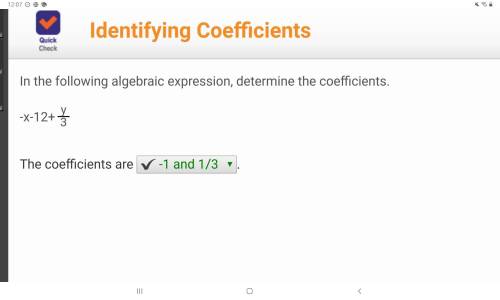----------------------------------------------------------------------------------------------------------------
-1 and 1/3
----------------------------------------------------------------------------------------------------------------
Step-by-step explanation:
----------------------------------------------------------------------------------------------------------------
This is for people with the question;
In the following algebraic expression, determine the coefficients.
-x-12+3/y
---------------------------------------------------------------------------------------------------------------
Also Theres Proof ↓ [all the Way Down - Screenshot]
----------------------------------------------------------------------------------------------------------------
Message~
Hope
you
have
an
✧・゚: *✧・゚:* Amazing*:・゚✧*:・゚✧
Day~
( ˙ ˘ ˙)βෆ
----------------------------------------------------------------------------------------------------------------
